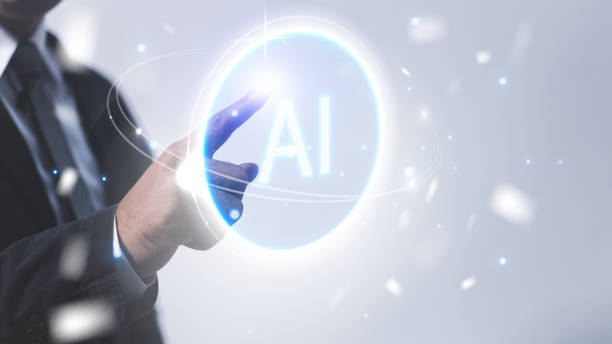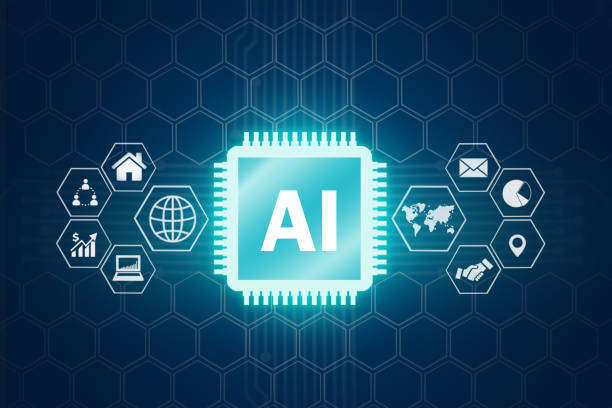What is an Artificial Intelligence Robot and How Does it Work?

#An Artificial Intelligence Robot (AI Robot) is a combination of two important and related fields: artificial intelligence and robotics.
Artificial intelligence refers to the ability of a computer system to perform tasks that typically require human intelligence, such as learning, reasoning, problem-solving, natural language understanding, and pattern recognition.
Robotics deals with the design, construction, operation, and application of robots.
An AI robot is, in fact, a robot that uses artificial intelligence algorithms and techniques to understand its surroundings, make decisions, and perform tasks automatically.
The operation of an AI robot usually involves the following steps: First, the robot collects data from its environment through its sensors (such as cameras, microphones, touch sensors, etc.).
This data can include images, sounds, temperature, pressure, and other environmental information.
Then, this data is transferred to a processing system, which typically consists of a computer or microcontroller.
In this stage, artificial intelligence algorithms are applied to the data to extract useful information.
For example, an image recognition algorithm can identify objects in an image, or a natural language processing algorithm can understand text.
Based on the extracted information, the robot makes decisions and plans how to perform its tasks.
These decisions can include moving towards a target, picking up an object, answering a question, or performing a specific action.
Finally, the robot executes commands using its actuators (such as motors, arms, wheels, etc.) and performs the desired action.
Throughout this process, the robot can learn from its experiences and improve its performance.
This learning can be achieved through machine learning algorithms.
Do your e-commerce website visitors leave before making a purchase? Don’t worry anymore! With Rasaweb’s professional e-commerce website design services, solve the problem of not converting visitors into customers forever!
✅ Significant increase in conversion rates and sales
✅ Unique and attractive user experience
⚡ Contact us now for a free consultation!
Applications of Artificial Intelligence Robots in Various Industries

The applications of AI robots are very broad and diverse, and they can be utilized in various industries.
In the manufacturing industry, AI robots can be used for repetitive and hazardous tasks such as welding, painting, assembling parts, and quality inspection.
These robots can work with higher precision and speed than humans, reducing the likelihood of errors.
In healthcare, surgical robots can perform complex surgeries with greater accuracy and minimal damage to healthy tissues.
Nursing robots can assist patients with daily tasks and deliver their medications on time.
Pharmacist robots can accurately compound medicines and prevent medication errors.
In the transportation industry, self-driving cars use AI robots to navigate roads without the need for a human driver.
These vehicles can reduce traffic, increase safety, and shorten travel times.
In customer service, chatbot robots can answer customer questions and resolve their issues.
These robots can be available 24/7 and provide services to a large number of customers simultaneously.
In the agricultural sector, agricultural robots can perform tasks such as planting, tending, and harvesting crops.
These robots can accurately deliver fertilizers and pesticides to plants and prevent resource waste.
Additionally, AI robots can be used in space exploration, search and rescue operations, and many other fields.
Generally, AI robots can be used wherever there is a need to perform repetitive, dangerous, or complex tasks.
These robots can increase productivity, reduce costs, and improve the quality of services.
Advantages and Disadvantages of Using Artificial Intelligence Robots
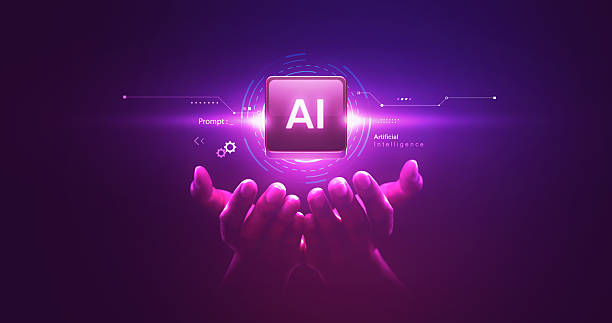
The use of AI robots offers numerous advantages, including increased productivity, reduced costs, improved quality, enhanced safety, and the ability to perform tasks impossible for humans.
AI robots can operate 24/7 without getting tired or needing rest.
They can perform repetitive and monotonous tasks with higher precision and speed than humans.
Additionally, AI robots can work in hazardous and inaccessible environments for humans, such as deep seas, space, and areas contaminated with chemicals or radioactive materials.
However, the use of AI robots also comes with disadvantages.
One of the most significant drawbacks is the high cost of designing, building, and maintaining these robots.
AI robots require advanced equipment, complex software, and skilled specialists.
Furthermore, the use of AI robots can lead to job displacement for humans,
as robots can automatically perform many tasks previously done by humans.
Moreover, AI robots may face ethical and legal challenges.
For example, if a self-driving car causes an accident, who will be responsible? The manufacturing company, the car owner, or the artificial intelligence algorithm?
Finally, it should be noted that AI robots are still in the early stages of development and face limitations.
These robots cannot replicate human creativity, empathy, and judgment.
Additionally, AI robots may encounter difficulties when facing unexpected and complex situations.
| Advantages | Disadvantages |
|---|---|
| Increased productivity | High cost |
| Reduced costs | Job displacement |
| Improved quality | Ethical challenges |
| Increased safety | Technological limitations |
Challenges Facing Artificial Intelligence Robot Development

The development of AI robots faces numerous challenges.
One of the most significant challenges is the collection and processing of vast amounts of data.
Artificial intelligence algorithms require large quantities of data to learn and improve their performance.
This data must be of high quality and properly labeled.
Collecting and labeling this data can be very time-consuming and costly.
Another challenge is the development of AI algorithms that can effectively interact with complex and unpredictable environments.
AI robots must be able to make correct decisions in various situations and adapt to environmental changes.
Another challenge is ensuring the safety and reliability of AI robots.
Robots must be designed to prevent accidents and, in the event of an accident, be able to react quickly and safely.
Additionally, robots must be reliable, and their performance predictable.
Another challenge is the development of ethical and legal standards for the use of AI robots.
Laws must be enacted to define the rights and responsibilities of robot manufacturers, owners, and users.
Standards must also be developed to ensure privacy and prevent discrimination in the use of robots.
Furthermore, the shortage of skilled personnel in the field of artificial intelligence and robotics is also a significant challenge.
The development and implementation of AI robots require skilled engineers, scientists, and technicians.
More investment should be made in training and educating specialized human resources in this field.
Did you know that customers’ first impression of your company is your website? Multiply your business credibility with a powerful corporate website from Rasaweb!
✅ Custom and visually appealing design tailored to your brand
✅ Improved user experience and increased customer acquisition
⚡ Get a free consultation!
The Future of Artificial Intelligence Robots and Their Impact on Our Lives

The future of AI robots is very bright and promising.
With technological advancements, AI robots will be able to perform more complex tasks and penetrate more areas of our lives.
It is expected that in the future, AI robots will be present in homes, hospitals, schools, factories, and other places, assisting us with daily tasks.
Robots can clean our homes, care for children and the elderly, help us learn, and even become our friends.
In healthcare, AI robots can assist doctors in diagnosing diseases, perform complex surgeries, and care for patients at home.
These robots can contribute to improving the quality of life and increasing human longevity.
In the manufacturing industry, AI robots can help increase productivity, reduce costs, and improve product quality.
These robots can perform repetitive and dangerous tasks, allowing humans to focus on more creative and complex work.
In transportation, self-driving cars can help reduce traffic, increase safety, and decrease air pollution.
These vehicles can enable elderly and disabled individuals to travel easily to different parts of the city.
However, it should be noted that the development of AI robots can also have negative impacts.
One of the most significant concerns is job displacement for humans.
With technological advancements, many tasks previously performed by humans will be carried out by robots and automated systems.
To prevent this problem, appropriate training and retraining programs should be considered for workers so that they can learn new skills and be employed in new jobs.
Additionally, ethical and legal challenges arising from the use of AI robots must be addressed, and appropriate laws and standards should be developed to regulate this field.
Types of Artificial Intelligence Robots Based on Application

#AI robots are categorized into different types based on their applications.
Industrial robots, used in factory production lines for repetitive and heavy tasks, are one of the common types.
These robots typically have strong and precise mechanical arms that can work at high speeds.
Medical robots, used in hospitals and treatment centers to assist surgeons, nurses, and pharmacists, are another type.
Surgical robots can perform complex surgeries with greater precision, while nursing robots can help patients with daily tasks.
Household robots, designed for everyday tasks at home, such as smart vacuum cleaners and gardening robots, are also increasing.
These robots typically have various sensors that allow them to understand their surroundings and perform their tasks automatically.
Military robots, used in armies for dangerous and difficult tasks, such as bomb disposal and mine detection, are also of high importance.
These robots usually have high resistance to harsh conditions and can operate effectively in hazardous environments.
Additionally, educational robots, used for teaching various concepts to children and adults, are also under development.
These robots can interact with students and help them learn new concepts.
In general, different types of AI robots are designed and built based on the diverse needs of societies and industries, and each has its unique features and capabilities.
Artificial Intelligence Robots and Machine Learning
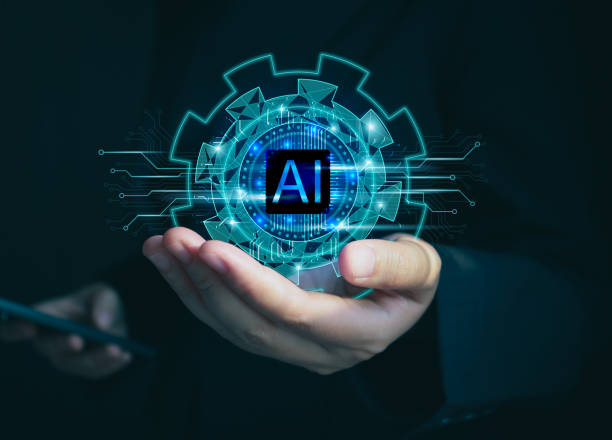
Machine learning is one of the most important subfields of artificial intelligence that enables robots to learn from data and improve their performance without explicit programming.
In fact, an AI robot uses machine learning algorithms to identify patterns and relationships in data, and then uses these patterns to make decisions and perform its tasks.
This process allows robots to adapt to changing environmental conditions and automatically optimize their performance.
There are various types of machine learning algorithms, each suitable for specific applications.
Supervised learning, where the robot is trained using labeled data, is one of the most common methods.
In this method, the robot learns how to map inputs to desired outputs.
Unsupervised learning, where the robot is trained without using labeled data, is another method that allows robots to discover hidden patterns in data.
Reinforcement learning, where the robot is trained by receiving rewards or penalties for its actions, is a method that enables robots to learn optimal strategies to achieve their goals.
The use of machine learning in AI robots enables them to perform more complex tasks and automatically adapt to various conditions.
For example, a surgical robot can learn from the experience of other surgeons using machine learning and improve its performance.
A self-driving car can learn traffic patterns using machine learning and choose optimal routes to reach its destination.
A household robot can learn the habits of its owner using machine learning and automatically perform daily tasks.
Security and Ethics in Artificial Intelligence Robots

With the widespread use of AI robots, issues related to security and ethics are gaining more importance.
One of the most significant concerns is the potential misuse of robots for malicious purposes.
Robots can be used for espionage, cyberattacks, and even terrorist acts.
To prevent these dangers, appropriate security measures must be taken to protect robots from hackers and abusers.
Additionally, laws and regulations must be enacted to prohibit the use of robots for malicious purposes.
Another concern is the impact of AI robots on individual privacy.
Robots typically have various sensors that can collect a lot of information about their surroundings.
This information can include images, sounds, location, and other personal data.
To protect individual privacy, laws and regulations must be established to limit the collection, storage, and use of personal information by robots.
Furthermore, individuals should be empowered to have more control over their personal information and be able to request robots to delete their data.
In addition to these issues, ethical concerns related to the use of AI robots must also be addressed.
For example, if a self-driving car causes an accident, who will be responsible? The manufacturing company, the car owner, or the artificial intelligence algorithm? Also, should robots have their own specific rights and responsibilities? To answer these questions, extensive discussions must take place in various communities, and appropriate ethical and legal standards must be developed.
| Security Challenges | Ethical Challenges |
|---|---|
| Misuse for malicious purposes | Impact on privacy |
| Cyberattacks | Accountability in accidents |
| Espionage and data collection | Rights and responsibilities of robots |
Do you dream of a thriving online store but don’t know where to start?
Rasaweb is your comprehensive e-commerce website design solution.
✅ Attractive and user-friendly design
✅ Increased sales and revenue⚡ Get a free consultation
Legal and Regulatory Obstacles for Artificial Intelligence Robots in Iran
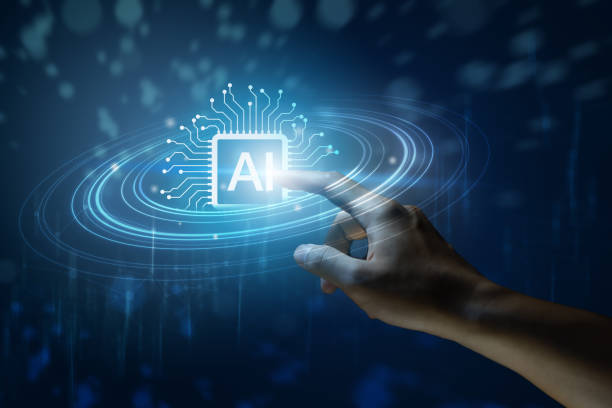
The development and use of AI robots in Iran also face numerous legal and regulatory obstacles.
One of the most important obstacles is the lack of comprehensive and codified laws and regulations in this field.
Currently, existing laws in Iran do not specifically address AI robots and cannot fully cover the issues related to this area.
This leads to ambiguity and legal uncertainty in activities related to AI robots.
Another obstacle is the lack of technical and safety standards for AI robots.
Technical and safety standards can help ensure the quality and safety of robots and prevent accidents.
Currently, there are limited national and international standards for AI robots, and greater efforts are needed to develop and implement these standards.
Furthermore, the absence of appropriate mechanisms for resolving disputes arising from the use of AI robots is also a significant obstacle.
If a robot causes damage, who will be responsible? How can the damage be compensated? To answer these questions, appropriate legal and judicial mechanisms must be designed and implemented.
In general, for the responsible and safe development and use of AI robots in Iran, it is necessary to develop comprehensive and codified laws and regulations in this area, implement appropriate technical and safety standards, and design suitable mechanisms for resolving disputes arising from the use of robots.
Investment Outlook in Artificial Intelligence Robots
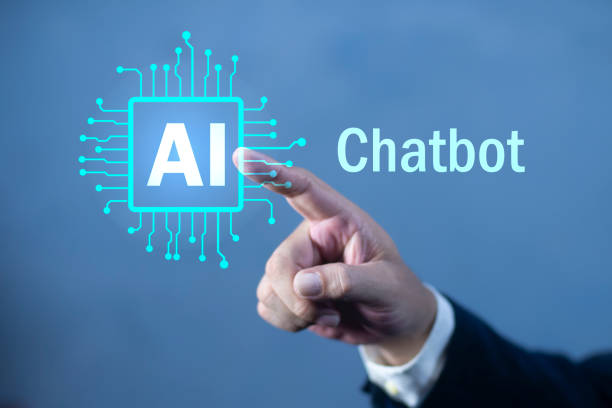
(AI robots) are a growing and attractive area for investment.
With technological advancements and the expansion of robot applications in various industries, the global market for AI robots is expected to experience significant growth in the coming years.
Investing in this sector can provide many profitable opportunities for investors.
There are various areas for investment in AI robots, including the design and manufacturing of robots, the production of robot components and equipment, the development of AI software for robots, the provision of robot-related services, and the training and education of specialized human resources in this field.
Investing in startups and emerging companies active in the AI robot sector can be highly profitable.
These companies usually have innovative ideas and high growth potential.
However, investing in these companies also involves high risk.
To mitigate risk, investors should carefully evaluate companies and ensure their growth potential.
Additionally, investing in venture capital funds that operate in the AI robot sector can be a suitable option.
These funds typically have a team of experts who identify and invest in promising companies.
Furthermore, investing in the training and education of specialized human resources in the field of AI robots can also be a strategic option.
With increasing demand for specialized human resources in this field, investment in education and training can yield high returns.
Overall, the investment outlook for AI robots is very positive, and investors can benefit from many profitable opportunities in this sector by choosing appropriate strategies.
Frequently Asked Questions
| Question | Answer |
|---|---|
| What is an AI robot? | It is a robot that uses artificial intelligence capabilities to understand its environment, reason, learn, and make decisions to perform complex tasks autonomously. |
| What is the main difference between a regular robot and an AI robot? | AI robots can learn and adapt to their environment, while regular robots typically operate based on fixed and pre-programmed instructions. |
| In what fields are AI robots used? | In fields such as industry (production lines), medicine (robotic surgeries), services (customer support, smart vacuum cleaners), exploration (space and underwater), and entertainment. |
| How do AI robots learn? | They acquire new skills through Machine Learning and Deep Learning algorithms, by analyzing large data sets and identifying patterns. |
| Can AI robots have emotions? | Currently, no. They can identify or simulate emotions, but they do not experience emotions in the same way humans do. |
| What are the most important advantages of using AI robots? | Increased productivity, reduced human error, performance of dangerous or repetitive tasks, and provision of innovative and efficient services. |
| What challenges exist in the development of AI robots? | The need for abundant and high-quality data, algorithmic complexity, ethical issues, cybersecurity, and high research and development costs. |
| Are AI robots dangerous to humans? | No, not with adherence to safe design principles and ethical regulations. Concerns are mostly related to social and economic impacts, such as changes in the job market. |
| What is an example of an AI robot in daily life? | Smart vacuum cleaner robots (like Roomba) that automatically map and clean homes, or smart voice assistants (like Siri and Alexa). |
| How is the future of AI robots predicted? | They are expected to become smarter, more autonomous, and capable of more complex interactions with humans, playing a more significant role in industry, medicine, transportation, and daily life. |
And other advertising services from Rasaweb Advertising Agency
- Smart SEO: Revolutionize SEO ranking improvement with custom programming.
- Smart Google Ads: A new service to increase click-through rates through intelligent data analysis.
- Smart UI/UX: A new service to boost online growth through marketing automation.
- Smart Brand Identity: Designed for businesses seeking online growth through the use of real data.
- Smart Custom Software: A fast and efficient solution for user interaction with a focus on marketing automation.
And hundreds of other services in the field of internet advertising, advertising consultation, and organizational solutions.
Internet Advertising | Advertising Strategy | Advertorials
Resources
Opportunities and Challenges of Artificial Intelligence in Iran
What are the Challenges of Artificial Intelligence (AI) and How to Manage Them?
Challenges and Opportunities of Artificial Intelligence
Artificial Intelligence and Upcoming Opportunities and Challenges
? Are you ready for your business to grow and shine in the digital world? Rasaweb Afarin Digital Marketing Agency paves your way to success by providing comprehensive and professional services, including custom website design, Search Engine Optimization (SEO), and content marketing strategies. Build a bright future for your brand with us and take a big step towards progress.
📍 Tehran, Mirdamad Street, next to Central Bank, Southern Kazeroun Alley, Ramin Alley, No. 6

